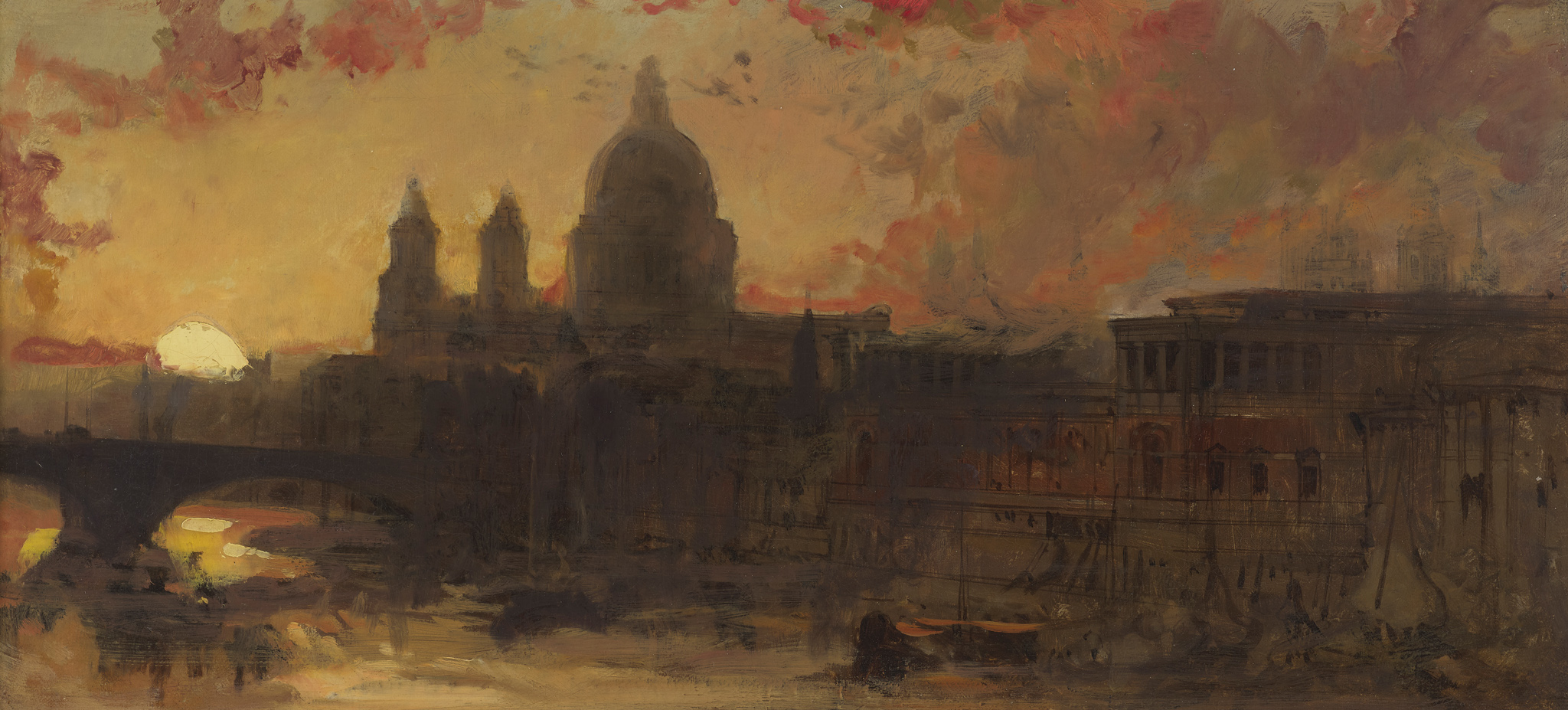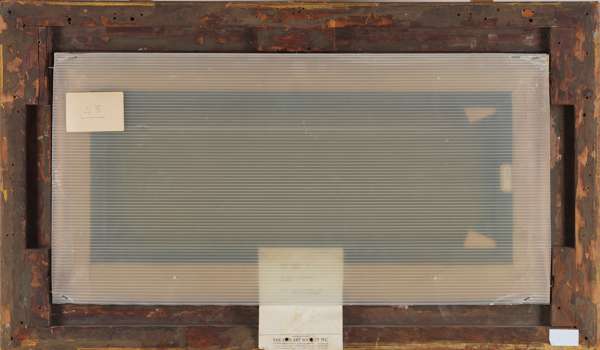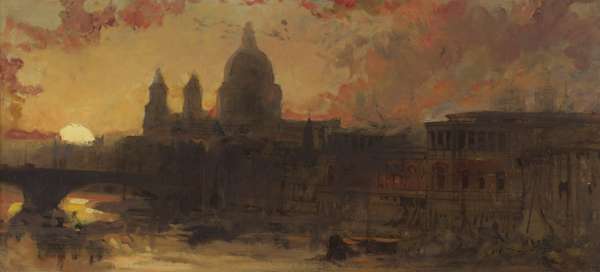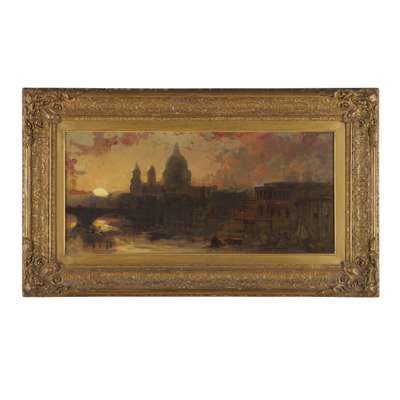
Lot 121

DAVID ROBERTS R.A. (SCOTTISH 1796-1864)
ST. PAUL'S, SUNSET








Scottish Paintings & Sculpture
Auction: Evening Sale | Lots 109 to 207 | Thursday 04 December 2025 from 6pm
Description
Oil on canvas
Dimensions
28cm x 61cm (11in x 24in)
Provenance
David Roberts, Studio Sale, 1865
The Artist's Son-in-law and by descent to David Bicknell, the Artist's Great-grandson
The Fine Art Society, London
The Collection of Gordon & Ursula Bowyer
Exhibited:
Barbican Art Gallery, London, David Roberts, 6 November 1986 - 4 January 1987, no.43, p.102, illustrated in colour pl.34
Footnote
“Mr Roberts is an artist possessing talents of the highest class; in his works profound art and the most scientific display of detail are equally perceptible; not as subservient the one to the other, but as co-operating to produce a perfect whole.” (Excerpt from The Gallery of Modern British Artists, Simpkin and Marshall, London, 1835)
David Roberts was one of the most accomplished artists of the Victorian era. Born in Stockbridge, Edinburgh in 1796, his relatively humble origins meant that initially his early artistic promise was funnelled into a profession that might supply him with a steady income – that of ‘house painting’. During this period it was a role that grew to demand much skill and creativity; a time which popularised the use of optical illusions and trompe l’oeil within interiors. Painters were required to accurately mimic the appearance of woodwork, marble, fabric and intricate plasterwork. Roberts, far more than an ‘Auld Reekie Slusher’, formed part of these revolutionary design developments.
This grounding in interiors set him in good stead and he swiftly progressed to add further artistic accomplishments to his repertoire. Following in the path forged by Alexander Nasmyth before him, Roberts soon became renowned for his forays into architectural design, as well as a long-term sideline as a theatrical set painter between 1816 and 1830. Wearing his architect hat, he narrowly lost out on the commission to design the Scott Monument in Edinburgh, though some elements of his design were carried through.
Before long, Roberts was established as a successful artist in London and was frequently called upon to give expert advice to the government in both artistic and architectural matters, for example regarding the decoration of the New Palace of Westminster, and to judge the competition entries for the new Public Offices in Whitehall. It is also notable when considering Roberts’ achievements that he was an avid campaigner for the preservation of antiquarian remains and was instrumental in protecting John Knox’s House on Edinburgh’s Royal Mile and Roslin Chapel in Midlothian from existential threats.
Despite the litany of accomplishments and breadth of his artistic endeavours, it is Roberts’ work as an artist-topographer for which he is best remembered. He was, during his lifetime, often mentioned in the same breath in terms of quality and renown as figures like J. M. W. Turner and Samuel Prout.
St. Paul’s, Sunset immediately recalls the works of Turner; the view of the dome silhouetted against the pink sky clearly inspiring both artists’ most Picturesque tendencies. More restrained than the dream-like hyperbole of Turner, this is nonetheless a beautiful, Romantic interpretation, astounding – as ever with Roberts - in its technical prowess. As Michael Pidgley notes in his catalogue essay which accompanied the 1986-87 Barbican retrospective of Roberts’ work, the Victorian era prized and appreciated ‘honest toil’, which his oeuvre certainly exudes in spades. Roberts’ works are breath-taking in their technical fastidiousness, but nonetheless appreciative of the character and charm of their locale, as evidenced by the two fine examples offered here, including Eglise de St Jacques, Dieppe. It has been suggested that St Paul’s, Sunset is a study for St. Paul's from the River looking West, Sunset of 1863 (untraced).
The present work was formerly in the collection of Ursula and Gordon Bowyer. Both architects, they were a remarkable couple who were deeply involved with the foundation of modernism in post-war Britain. Formed over six decades, their collection reflects both an unerring eye for innovation as well as a deep love of London’s historic architecture. This was reflected in their choice of home, an eighteenth-century house in Greenwich, as well as their interest in 18th and 19th-century prints of scenes of the city.
The Bowyers met during the Second World War whilst training at Regent Street Polytechnic in the English capital, were married in 1950 and made their professional names by designing the Sports Pavilion of the Festival of Britain the following year. They went on to specialise in domestic commissions, most notably the mirrored terrace at 17 and 17a Montpellier Row in Blackheath, which they built in 1958 for their friend, the Labour politician Jim Callaghan.
By the time Gordon retired in 1993, the Bowyers’ practice had completed 550 projects of incredible and infinite variety, from minor interventions to major schemes, from social housing projects to a string of stylish boutiques for the hair stylist Vidal Sassoon across Europe and America. And as avid collectors of art and design, it was inevitable that they would also design for museum and galleries, including the Japanese Gallery, Oriental Antiquities Gallery and the Prints and Drawings Gallery at the British Museum.








